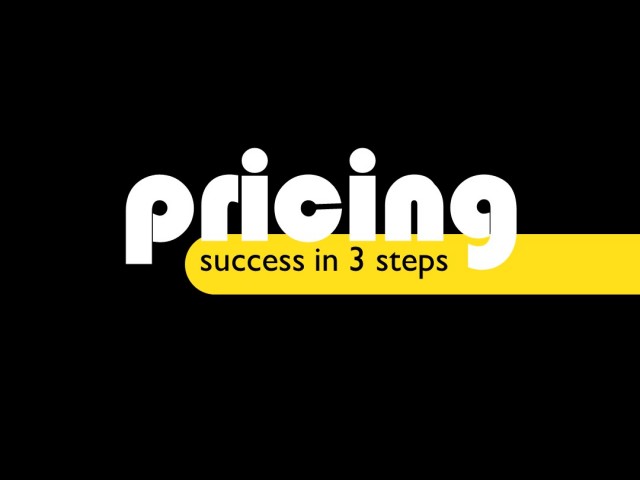3 steps to pricing success
Nov 2, 2020, 4:57 AM
It is common practice in café/restaurants to buy a finished product (wholesale) and re-sell it (e.g. muffins). This is distinct from the practice of converting raw ingredients into a finished product to be sold to the consumer. In this post, we look at how to price your products and assess your product mix.
Price a product you make
The usual method for pricing a product is to calculate the food (& packaging) cost then divide by your target food cost % to determine the recommended or target sell price (excl. GST). Let’s say you can produce a muffin for $2.00 and your target food cost is 30% of total sales (excl. GST).
|
Food (& Packaging) Cost |
$2.00 |
|
Target Food Cost (%) |
30% |
|
Target Sell Price (excl. GST) |
$6.67 |
|
Margin |
$4.67 |
Margin represents the allowance to cover everything except food and packaging costs. For example, labour costs, other expenses and profit.
Price a product you buy in
When you buy a product from a supplier/wholesaler and re-sell it, you might expect to pay more since the supplier’s cost of ingredients, labour, other expenses and profit are all embodied in the wholesale price.
Let’s assume you buy a muffin from a supplier for $2.90. Using the same approach as above yields a target selling price of $9.67 (excl. GST). You (& your customers) might consider this price as un-reasonable for a muffin.
|
Food (& Packaging) Cost |
$2.90 |
|
Target Food Cost (%) |
30% |
|
Target Sell Price (excl. GST) |
$9.67 |
|
Margin |
$6.77 |
But, when you buy a product wholesale, you might be prepared to accept a lower margin as you can assign less labour to these products.
How low can you go?
For products that you buy in to re-sell, it can be useful to determine the lowest feasible price. To do this, we essentially assign zero labour cost to the product bought in. Assuming that your target staff cost is 20% of total sales (excl. GST), the lowest feasible price is the food (& packaging) cost divided by 50% (i.e. target food cost % + target staff cost %).
|
Food (& Packaging) Cost |
$2.90 |
|
Target Food & Labour Cost (%) |
50% |
|
Lowest Feasible Price (excl. GST) |
$5.80 |
|
Margin |
$2.90 |
Pricing some products you buy at their lowest feasible price is OK. But, if you set the price for every product in your café using this method, you will not be able to cover all your expenses, pay your staff and achieve your target profit margin.
Importantly, these pricing methods just offer a (minimum) benchmark. The actual price that you set will ultimately be based on what you think your customers are willing to pay. If you don’t think customers will pay more than the lowest feasible price, then the product is simply not feasible and you shouldn’t implement it.
How do you know if your actual pricing is right? You need to assess your product mix.
Assessing your product mix
Every food business has a product mix – a mix of high and low margin products. Think of low margin products as ‘fillers’ and high margin products as ‘earners’. Clearly, ‘earners’ are important and should be among your highest selling products. ‘Fillers’ are also important as they enhance your offering and help to increase average spend.
To determine if your actual pricing is right, you can assess your product mix by including all the products you sell in a table like the following.
|
Product |
Sales QTY |
Food Cost (Per Unit) |
Total Food Cost |
Actual Price (excl. GST) |
Total (Net) Sales |
|
Muffin |
10 |
$2.90 |
$29.00 |
$6.27 |
$62.70 |
|
Salad |
8 |
$3.00 |
$24.00 |
$12.00 |
$96.00 |
|
|
|
TOTAL |
$53.00 |
|
$158.70 |
Now, calculate your actual food cost %. In this example, total food cost / total (net) sales is 33%. This is currently above our target of 30% so some adjustments to actual price and/or food costs might be considered. Alternatively, we might consider some marketing options to boost the sales of the ‘earners’ - the high margin products - which will also improve your overall food cost %.
This exercise should be done frequently, say fortnightly or monthly, and especially after a new product is introduced.
The takeaway
Follow these 3 steps to pricing success:
1. Cost your product(s) and determine the target sell price (if you make it) or lowest feasible price (if you buy it in).
2. Set the actual price – determined by what you think customers will pay but must be higher than your benchmark price.
3. Assess your product mix (regularly) and make the necessary adjustments to continually achieve your target food cost %.

